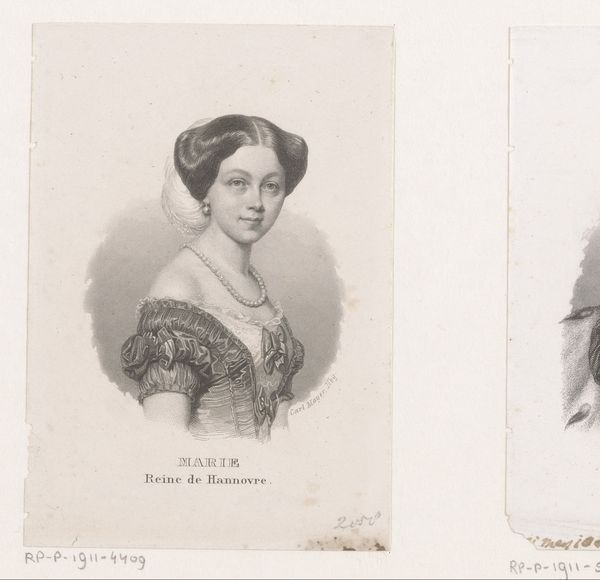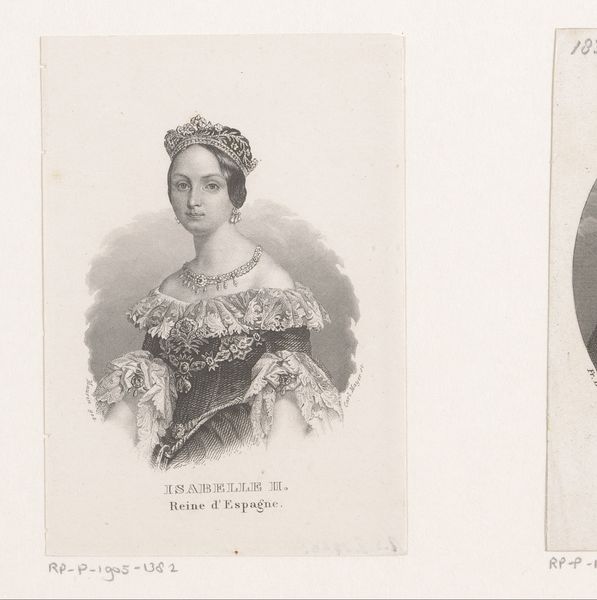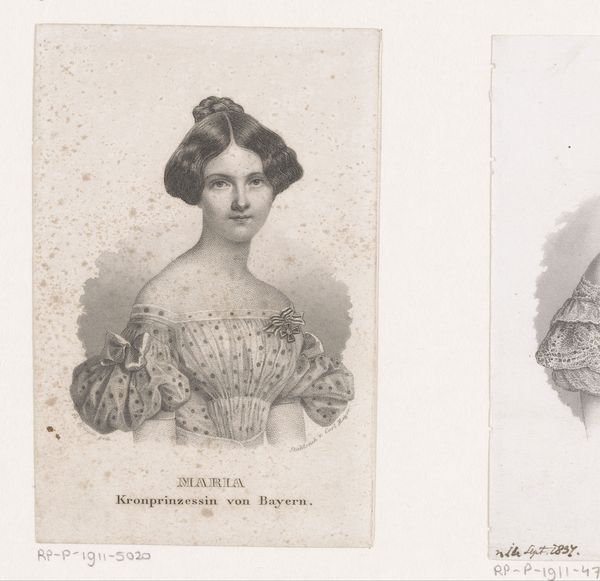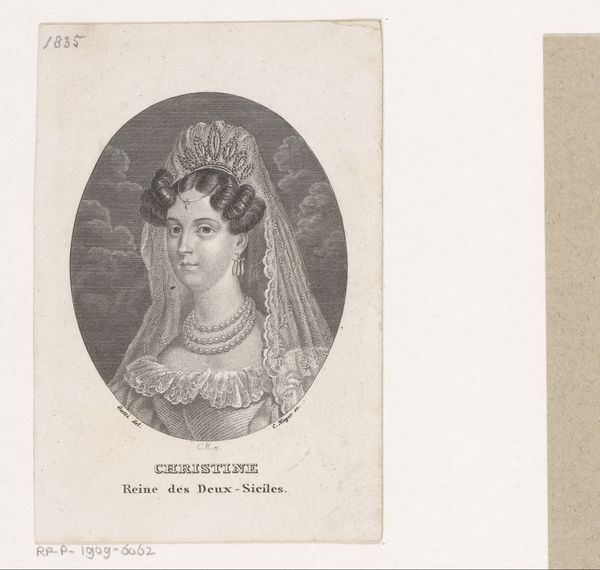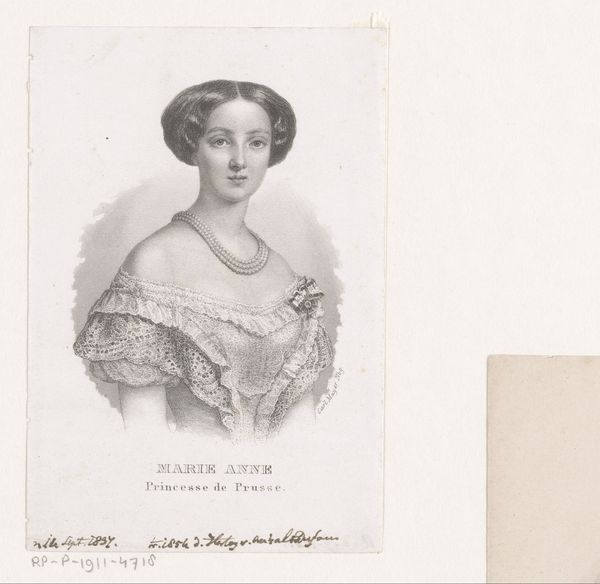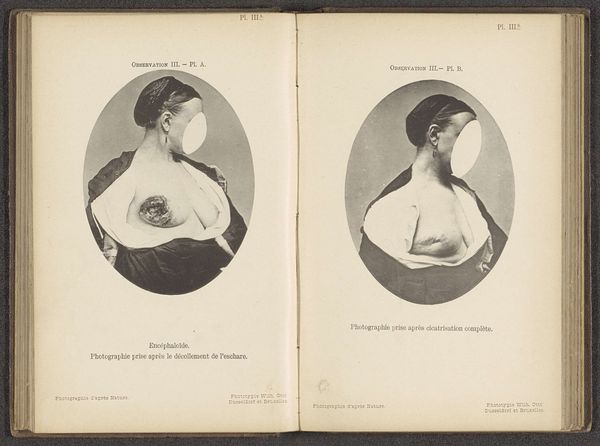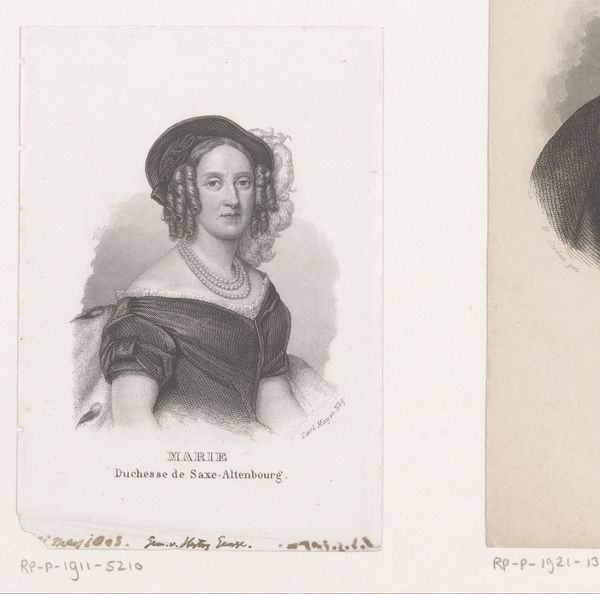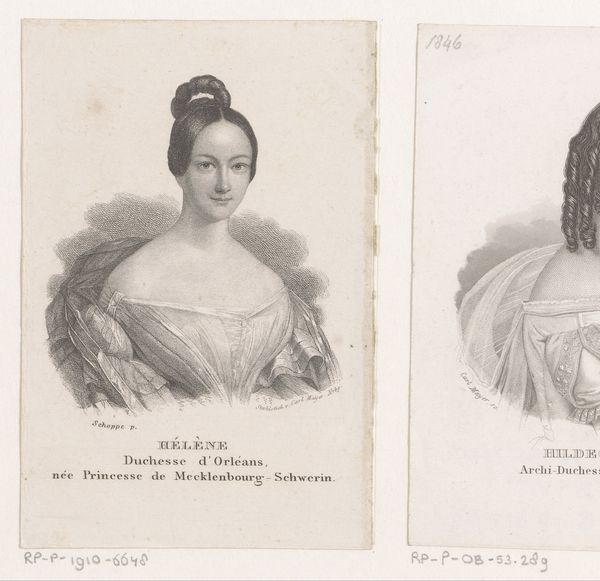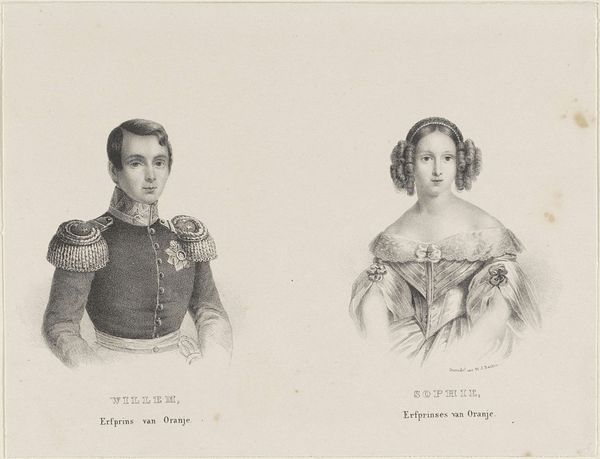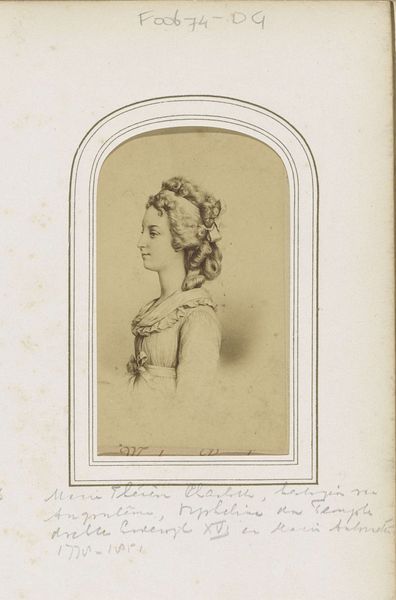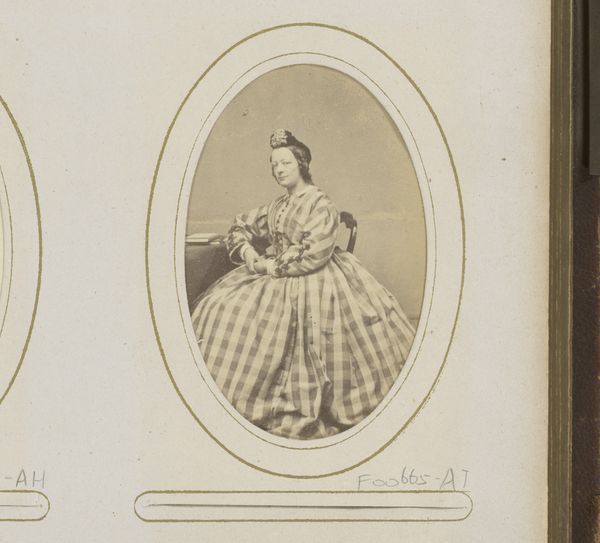
drawing, print, etching, pencil, graphite
#
portrait
#
drawing
# print
#
etching
#
charcoal drawing
#
pencil drawing
#
romanticism
#
pencil
#
graphite
#
history-painting
#
graphite
Dimensions: height 108 mm, width 74 mm
Copyright: Rijks Museum: Open Domain
Editor: This is a print titled "Portret van Luisa Fernanda de Bourbon," dating from 1832 to 1868, attributed to Carl Mayer, here at the Rijksmuseum. It has such a delicate and refined quality to it. What do you find most interesting about this particular portrait from a historical perspective? Curator: This portrait is compelling because it represents Luisa Fernanda de Bourbon, a member of Spanish royalty during a period of immense political upheaval in Europe. The image itself is an etching and print, which speaks to the growing accessibility of portraiture during the 19th century. It allowed for the wide distribution of imagery related to those in power, influencing public perception. What do you think that lace detail communicates? Editor: I suppose that level of detail and finery speaks to her status, a kind of visual propaganda almost? It does seem deliberately designed to convey power and elegance, particularly how her gaze meets the viewer. Curator: Exactly. How do you think a portrait like this, circulated as it was, could influence political and social views towards the monarchy in a time of revolution? Do you believe this type of artwork reinforces social hierarchies, or provides insight into historical figures? Editor: I see what you mean. It's definitely both reinforcing hierarchy and providing insight, isn't it? Thinking about it as propaganda, I realize I initially overlooked how it frames her in such a controlled and deliberate manner, influencing her public image and how the populace perceived the monarchy. Curator: Precisely. Analyzing images within their socio-political context allows us to decipher how they actively participated in shaping the narratives of power. I've learned that the image is not neutral, but a powerful tool. Editor: I've never considered portraiture that way, thank you. I'll look at these works quite differently moving forward.
Comments
No comments
Be the first to comment and join the conversation on the ultimate creative platform.
